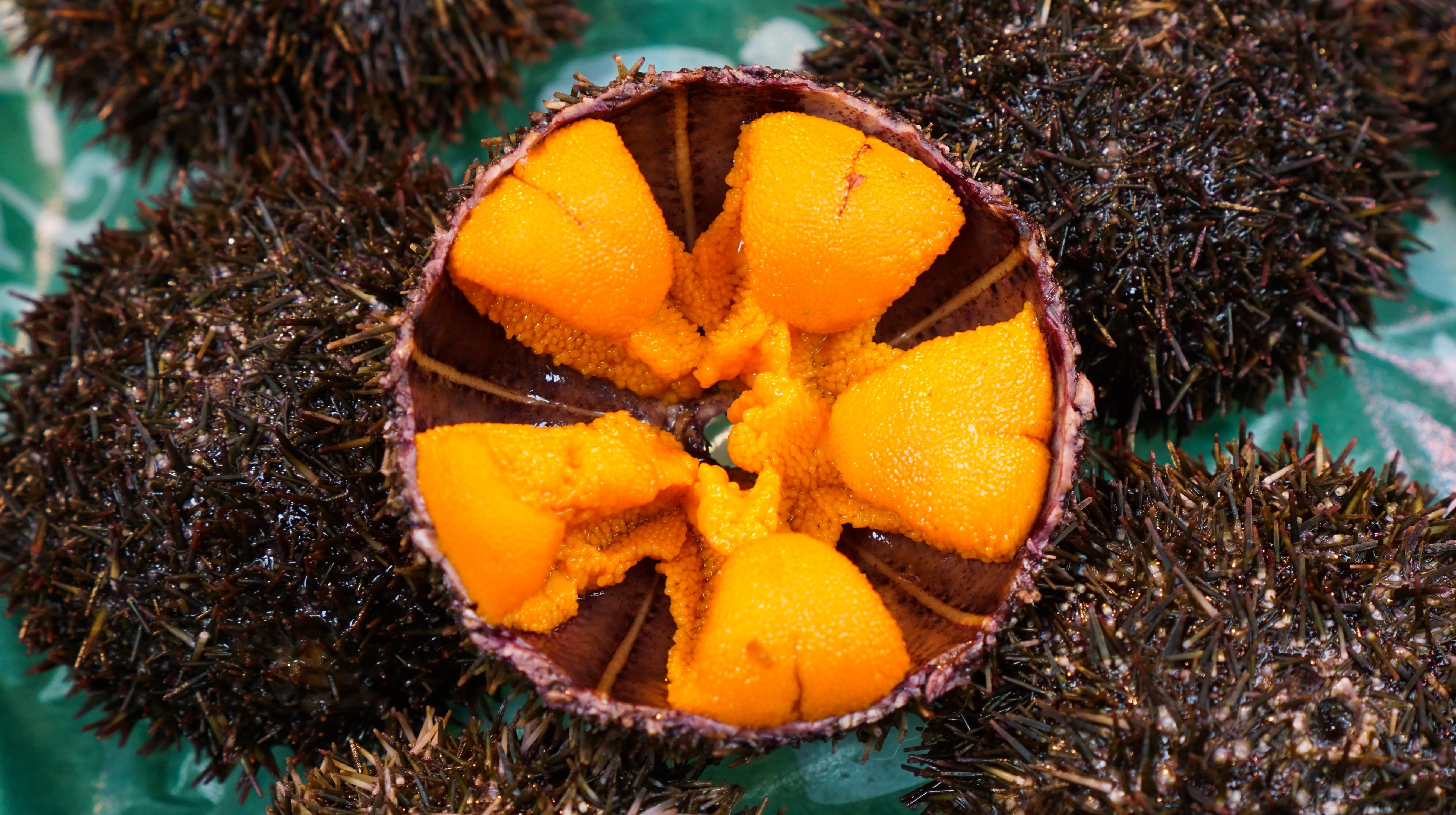Why People Are Split On Sea Urchin
Not everyone is a fan of the spiky sea creature's roe.
When you first see a sea urchin, your first reaction is probably not hunger. The little spiky balls resemble more of a crude weapon than they do something edible. But crack open one of those prehistoric-looking suckers and you'll be greeted with five bright orange lobes that are ready to be scooped out and eaten. Yes, for those snickering in the back, those alien-looking lobes are the sea urchin's gonads.
You may know the edible form of this ocean creature as urchin roe or simply uni, the Japanese name for sea urchin, because it's commonly enjoyed as a topping for sushi. It's a delicacy that many people find delicious, but it tends to intimidate diners who have never tried it before. To the latter group, we say: enjoy uni without hesitation.
How does sea urchin roe taste?
If you eat uni with any regularity, then you're probably already over the moon about it. Raw uni has a texture that's wholly unique: silky and rich, like a custard, firmer when fresh, but melting away with the slightest touch regardless. I'd describe the flavor as sweet, briny, with a touch of saline bitterness at the end. If the uni is a lower grade, it can get fairly bitter, in a somewhat unappealing way. Regardless, it should be obvious that I'm Team Uni all the way.
SFGate recently highlighted sea urchin's popularity in Santa Barbara, California. The article explains that the flavor really depends on what the sea urchin itself has eaten, which can be practically anything, from algae to other sea creatures. A diet of certain red algae, for example, can boost the creature's aforementioned bitterness.
When heated, uni takes on a grainier quality and loses that luxurious soft texture. The flavor is more that of cooked fish roe, and it can get sort of a mealiness to it and its nuances can be obliterated. That's why people typically prefer it raw.
Why do people have such strong feelings about urchin?
If any of the tasting notes above don't appeal to you, there's a good chance you will strongly dislike sea urchin roe. Psychologically, many people are sensitive to soft, pudding-like textures, and that seems to be the most common complaint I hear about it. Its got a very distinct flavor as well, with a slight iodine-like note at the end.
The richness of uni is also a barrier to entry for people who might consider that first taste too much of a commitment. And, of course, at its typical price point, it's something of a financial investment, too.
Why is uni so expensive?
For starters, all uni is hand-harvested, meaning divers have to manually pluck the urchins from the sea floor, or from between rocks and hard-to-reach places. That's a tough job, and you're limited by how much a diver can grab per harvest.
The yield is naturally low. Each sea urchin only has five lobes of gonads (stop snickering—that's a technical term!), and those lobes can range in size, from tiny to the length of a thumb. Couple that with the expert processing it takes to crack open the sea urchins, clean them, and carefully scoop out the innards, all of which is done by hand, and the cost to order uni suddenly makes a lot more sense. These things can command a huge price, up into the hundreds of dollars per tray. It also has a short fridge life of about a week, so it must be enjoyed more or less fresh.
Insider has a great video on what it takes to harvest and clean these spiky creatures, and they take so much work it might make your head spin. Even a single piece of uni at my local affordable sushi takeout spot is a whopping $6.25, and this isn't even the top-tier stuff. I consider it a treat and order it rarely. Whether or not it's worth ordering is up to you, but even if you don't like it, you can respect how all that labor translates into a higher price tag.
Culinary uses for urchin, beyond sushi
Remember how I said sea urchin has a custardy texture? That means urchin can be used in a variety of dishes beyond sushi; for example, you can incorporate it into a pasta sauce simply by stirring it in gently, taking care not to cook it. I've seen some fine dining restaurants turn urchin into a foam for a garnish, or just place it on top of a small piece of toast. Other than perhaps a drop of soy sauce or a touch of acid, you don't need to dress up urchin to enjoy it. Less is more here; a good piece will provide all the creamy and sweet flavor on its own.
If you've never had sea urchin, I'd say it's definitely worth trying at least once in your lifetime, even if the thought is a little intimidating for some. In that case, I'd be more inclined to suggest you try it in its purest form at a higher-end sushi restaurant, in nigiri, hand roll, or sashimi format—since it's so delicate, you're better off pairing it with rice just so you can pick it up. That taste will let you know if it's for you. If not, that just leaves a little more in the world for me. Provided I can afford it, of course.
